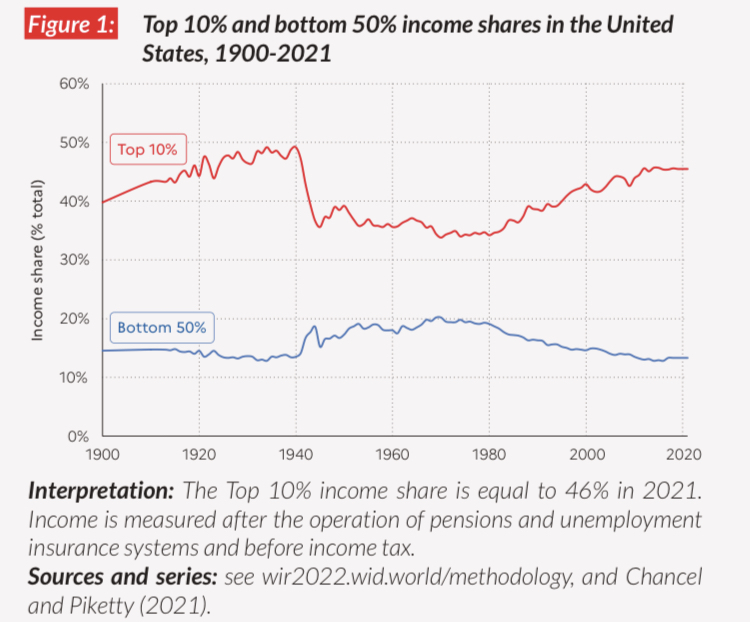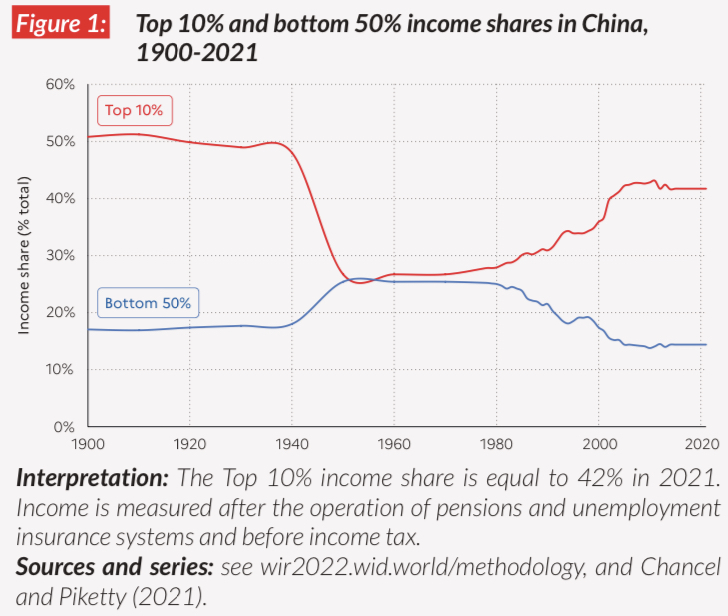- cross-posted to:
- communism@lemmygrad.ml
- cross-posted to:
- communism@lemmygrad.ml
Source: Piketty's World Inequality Report 2022
I shared this deep in a dunk thread earlier and figured there's probably many comrades who haven't seen this data. I think it's very good rhetorically because a lot of libs have an incredibly vibes-based impression that the Soviet Union was just an Animal Farm old-boss-same-as-the-new-boss situation.
Instead, this demonstrates that Russia underwent one of the most dramatic inversions of income inequality of any country in recorded history.
For comparison here is the US over the same time period:
Show


China:
Show


And the UK:
Show



People here miss the main reason for the Chinese graph. Due to rapid modernaziation and urbanization China is at a point where it has two countries with different levels of income within itself. One with some 200-300 million people in the big cities earning basicaly European level salaries and incomes and one of some 200-300 million rural residents that make 2-3 times less at least (and then various stages in between).So in the process of massive urbanization in a very short period of time a shitton of people have been uplifted to high income status while a shitton are in the way and a shitton are still not uplifted but most likely will. That creates a very unique impact in inequality metrics without context
Also that doesnt translate to equaly huge disparty in quality of life or purchasing power since in rural or small town China life ,even beyond rent, is indeed much cheaper compared to urban ereas in a degree not seen in the vast majority of countries . That particular configuration is very specific to China. For example the median US "rural" income is just 20% lower than the median urban one and despite that income inequality is so immense nationwide
And all that ignoring the particularities that arise if you try to make a wealth graph for China instead of income. With 90% home ownership rate, very large savings compared to other countries, an ever present in kind welfare state and a "at least on paper" people's state that can be argued to actively control most of the wealth in various ways . Even for a "de formed" workers state how can you really make a wealth graph that accounts for the non capitalist particularities of ownership and control
Also how can you even compare stats like that between different modes of production. The bottom 50% in 1930s China were landless peasant serfs slaving on feudal warlords and living till 33 years old. What does them having 25% of Chinas income share even mean or even matter? How can you compare it to the situation I described above. How is it even calculated in such a context ?
It's nothing like comparing and calculating the stats in Western capitalist countries now vs in the 30s or 40s
Good points, but rich mfers in China are still really rich. There’s a big delta between tech bros and Foxconn workers living in Shenzhen or whatever. Still, even the folks on the bottom of the ladder are afforded life’s necessities, you won’t see tent cities for example
Yeah China has more people living in rural areas than the EU or the US has people. It's a current massive undertaking to modernise or urbsnise further
The graph also doesn’t take imperialism or colonialism into account, how amerikkka’s global south vassals are vastly poorer than the vast majority of Americans living within the USA’s borders. Income also doesn’t always equal class. Labor aristocrats in the USA can make more money than the petite bourgeoisie, for instance.
I absorb all my China info 3rd hand or worse from internet communists, but word on the street is that the CPC had explicitly stated that the primary contradiction of this era is uneven development between rural and urban areas, and resolving this contradiction is now a primary focus.